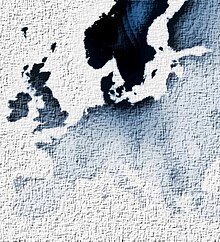Haplogroup I1 (Y-DNA)
| Haplogroup I1 (M253) | |
|---|---|
 |
|
| Possible time of origin | 3,170–5,070 BP(previously 11,000 BP to 33,000 BP) |
| Possible place of origin | Northern Europe |
| Ancestor | I* (M170) |
| Descendants | I1a (DF29/S438); I1b (S249/Z131); I1c (Y18119/Z17925) |
| Defining mutations | M253, M307.2/P203.2, M450/S109, P30, P40, L64, L75, L80, L81, L118, L121/S62, L123, L124/S64, L125/S65, L157.1, L186, L187 |
Haplogroup I-M253, also known as I1, is a Y chromosome haplogroup. The genetic markers confirmed as identifying I-M253 are the SNPs M253,M307.2/P203.2, M450/S109, P30, P40, L64, L75, L80, L81, L118, L121/S62, L123, L124/S64, L125/S65, L157.1, L186, and L187. It is a primary branch of Haplogroup I-M170 (I*).
The haplogroup reaches its peak frequencies in Sweden (52 percent of males in Västra Götaland County) and western Finland (more than 50 percent in Satakunta province). In terms of national averages, I-M253 is found in 35–38 per cent of Swedish males, 32.8% of Danish males, about 31.5% of Norwegian males, and about 28% of Finnish males.
Haplogroup I-M253 is a primary branch of haplogroup I* (I-M170), which has been present in Europe since ancient times. The other primary branch of I* is I-M438, also known as I2.
Before a reclassification in 2008, the group was known as I1a, a name that has since been reassigned to a primary branch, haplogroup I-DF29. The other primary branches of I1 (M253) are I1b (S249/Z131) and I1c (Y18119/Z17925).
According to a study published in 2010, I-M253 originated between 3,170 and 5,000 years ago, in Chalcolithic Europe. A new study in 2015 estimated the origin as between 3,470 and 5,070 years ago or between 3,180 and 3,760 years ago, using two different techniques. It is suggested that it initially dispersed from the area that is now Denmark.
A 2014 study in Hungary uncovered remains of nine individuals from the Linear Pottery culture, one of whom was found to have carried the M253 SNP which defines Haplogroup I1. This culture is thought to have been present between 6,500 and 7,500 years ago.
...
Wikipedia
